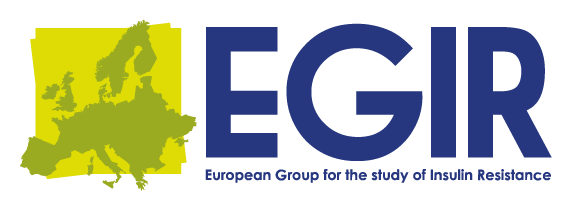
The EGIR group originated in 1992 in Prague during a meeting focused on pre-diabetes, insulin resistance, and metabolic syndrome. Key participants included Stefano del Prato, Johan Eriksson, Eveline Eschwège, Ele Ferrannini, Annick Fontbonne, Leif Groop, Rury Holman, Hans Janka, Markku Laakso, Hans Lithell, André Scheen, Marja Riitta Taskinen, Robert Turner, and Ivana Zavaroni.
Following this, in 1993, Annick Fontbonne, Leif Groop, and Christophe Pasik hosted a second meeting at Le Château de Maffliers in France, under Lipha's sponsorship. It featured presentations on “Metabolic Syndrome” by Ele Ferrannini, Paul McKeigh, and Ulf Smith ; "measuring insulin resistance” by Stefano del Prato, Robert Turner, and André Scheen; and "predictors of NIDDM” by Leif Groop, Robert Turner, and Philippe Froguel. This meeting saw the participation of 34 attendees and included 16 abstracts. In 1995, Ele Ferrannini suggested aggregating data from various European centers to assess insulin resistance using the hyperinsulinaemic euglycaemic clamp. This effort led to a significant publication in the Journal of Clinical Investigation. The successful research network, aided by Beverley Balkau, Jacqueline Dekker, and Sarah Hills, led to the proposal of a project titled “Relationship between Insulin Sensitivity and Cardiovascular Disease” (RISC), which secured a European Commission grant in 2001 for a study on insulin resistance effects in healthy individuals, with additional funding from AstraZeneca.
The EGIR-RISC study involved 21 European centers and over a thousand volunteers. Numerous influential papers have been published, and researchers continue with the long-term follow-up of the cohort. Annual EGIR meetings have consistently taken place since 1992, addressing a range of subjects beyond insulin resistance.
From 2018 to 2021, NAFLD was officially listed among the EASD Study Groups.